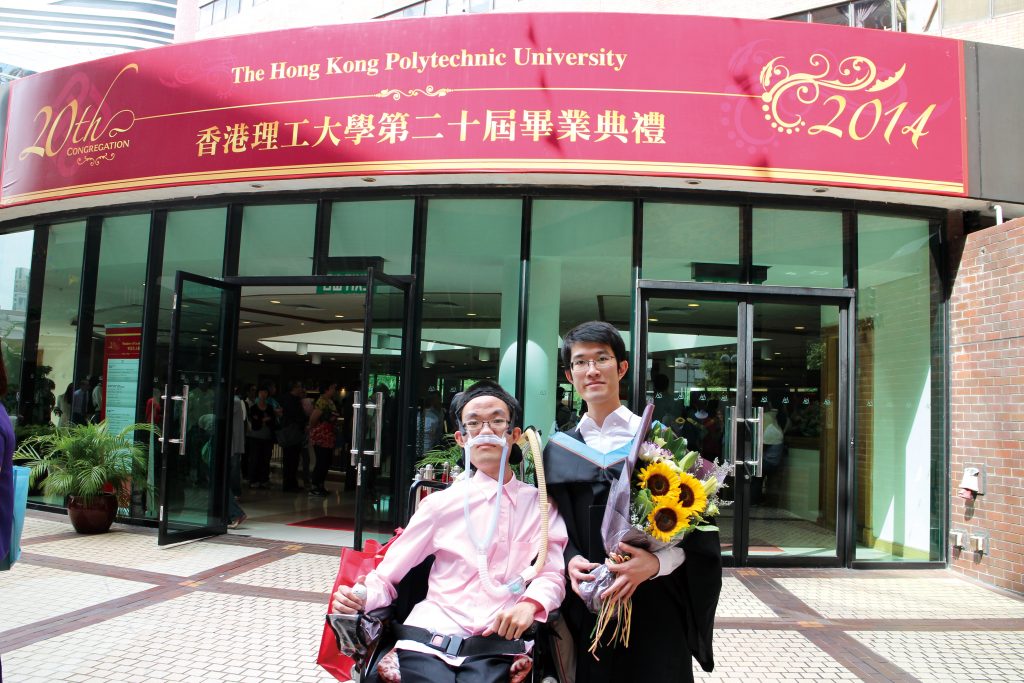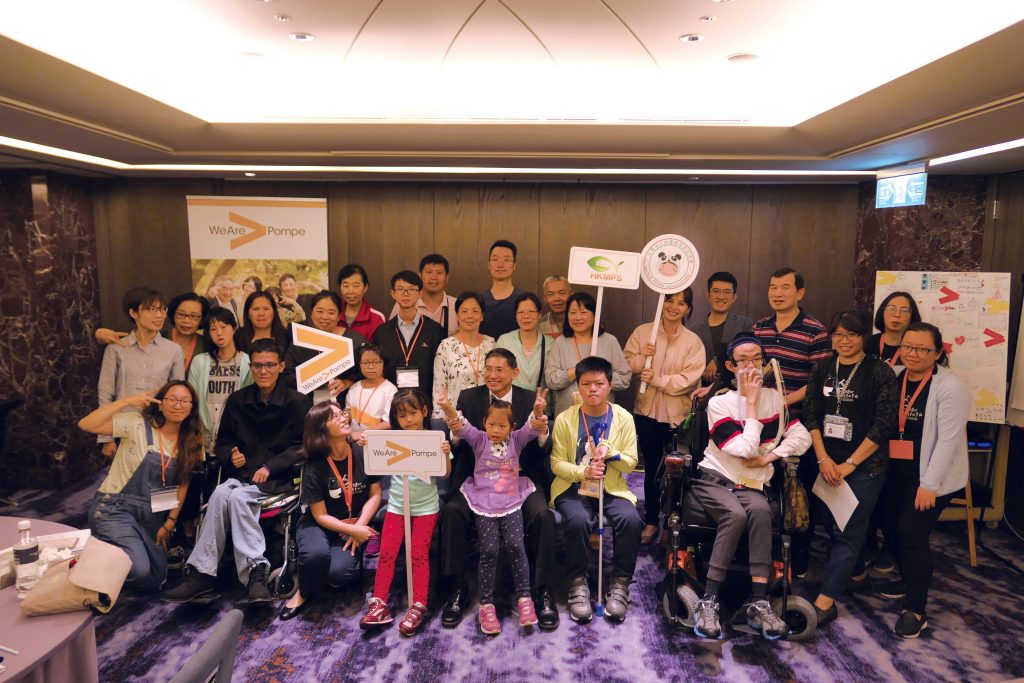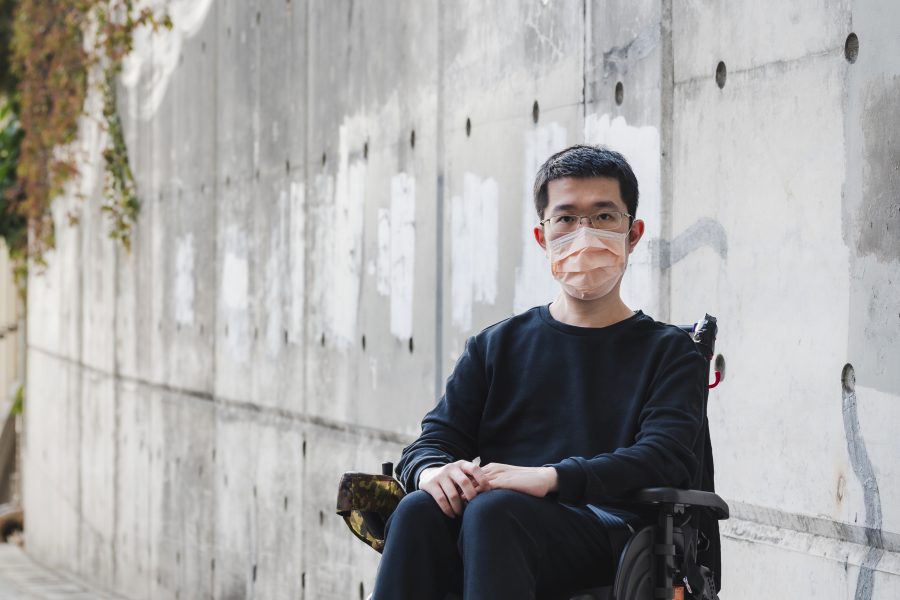In the 1990s, rare diseases were unfamiliar to most people, even medical professionals. A 13-year-old boy and his nine-year-old brother were both diagnosed with the rare Pompe disease but still live life to the fullest with their strong will to thrive. Terry, the younger brother, who now works at an organization dedicated to helping patients suffering from rare diseases, devotes himself to sharing his knowledge and experience to render support to his fellow patients: “The consequences of rare diseases go beyond the patient and affect the whole family. Raising public awareness on rare diseases and finding ways to improve patients’ quality of life will benefit society as a whole.”
What is Pompe disease?
Pompe disease is a rare and fatal hereditary disease. One in 40,000 or 50,000 newborns is diagnosed with infantile-onset Pompe disease, while one in every 20,000 persons is a late-onset patient. Pompe disease is a lysosomal storage disorder in which acid α-glucosidase (GAA) is absent or deficient, resulting in the body’s inability to break down glycogen. Too much glycogen build-up in the patient’s tissues can severely damage muscle function, resulting in muscle weakness, difficulty in breathing, cardiomegaly or heart failure. Infantile-onset patients often suffer more severe symptoms and only live for one to two years; late-onset patients, on the other hand, tend to have a reduced quality of life and must rely on ventilators and wheelchairs due to weaker cardiopulmonary function and muscle strength.
Diagnosed as brothers
There are currently three infantile-onset and 12 late-onset patients in Hong Kong with Terry and his brother being two of the earliest Pompe disease cases found in the city. As Princess Margaret Hospital’s (PMH) first Pompe disease patient, Terry’s brother developed symptoms at 12 and was diagnosed at 13. Terry, who enjoyed ball games as a child, started experiencing symptoms at 13 as well. He recalls bearing witness to his brother’s illness when he was merely nine years old: “My brother has never been an athletic person. After he recovered from a fever, he was struggling to climb up the stairs of the restaurant where our family went for dim sum. We initially thought he was still recovering from the fever, but his condition lasted for up to two months.” Terry’s parents sought medical help everywhere and only realized their son had been suffering from Pompe disease a year later. “Our parents, who are not well-educated, did not understand what the disease entails except that it causes muscle atrophy.” As Terry’s test results were ambiguous, the doctors could not be sure whether he would develop symptoms like his brother.
After PMH’s diagnosis, more serious symptoms surfaced in Terry’s brother within the next few months, such as severe scoliosis due to lower-limb muscle deterioration – a typical condition among late-onset patients. Consequently, Terry’s brother must rely on ventilators as his rib cage was pressing against his lungs. He stopped going to school as he spent his days on bed rest. He took a spinal surgery, but had to live on a wheelchair for the rest of his life. Albeit his brother’s deterioration, Terry remained optimistic and physically active. Although he had yet to fully grasp the disease with which he was battling, he hoped to delay it and ultimately prove to be free from its damning claws.
In Form Two, 13-year-old Terry began developing symptoms. “My muscles became weaker; I struggled to climb up and down the stairs and could only move my legs when I transferred my weight to the handrails. I did not gain weight even during adolescence and suffered hypersomnia caused by pulmonary dysfunction. The grogginess of slumber only went away an hour or two after waking albeit getting more than 10 hours of sleep. In addition, I suffered from a weak stomach and bladder, resulting in the frequent urge to urinate or defecate as well as incontinence. One time, my 20-minute MTR trip turned into an hour-long journey because I had to get off the train to go to the washroom multiple times.”
Living with courage and hope
This disease was deleterious to every member of the family. His parents even blamed themselves for their sons’ condition. Terry recalls, “Our ignorance of the disease, as well as the fact that it is genetically inherited, resulted in countless from. Though shouldering immense financial burden and enormous stress as caretakers – so much that suicide was a topic of discussion amongst them – our parents still offered us unconditional support. If my brother and I were also consumed by negativity, this family would have collapsed. To keep our family together, we must remain optimistic and express to our parents our hope to live.” Terry’s brother was dedicated to pursuing his studies, though he had to transfer from school to school due to his special learning needs. Thanks to the help of his teachers and friends, he got admitted to university and received a scholarship to pay for his medical equipment. Terry, meanwhile, remained active with hopes of consoling his parents.

In 2006, Terry joined two patient support groups – Hong Kong Neuro-Muscular Disease Association (HKNMDA) and the Hong Kong Mucopolysaccharidoses & Rare Genetic Diseases Mutual Aid Group. The former is a support group for muscular dystrophy patients; the latter is an advocacy group devoted to facilitating communication among rare disease patients and fighting for their rights. Soon, he brought his parents to activities organized by the group so they could meet other families sharing the same struggles. From then on, his parents bounced back from perhaps the lowest point in their lives and eventually came to accept the disease as a part of their lives and even regained motivation to keep going forward. Terry also found his path to self-improvement in these patient support groups and became involved with other patients in raising awareness amongst the public and the government to address patient rights. Here, he went from a helpless victim to a supportive aide.
Back to a carefree childhood
When Terry’s symptoms began to show, his doctor comforted him by saying that rapid medical advancement means a cure may present itself in the future. In 2006, these words finally came true when professionals in Taiwan came up with enzyme replacement therapy (ERT) via injections, which supplement the GAA enzyme that patients with Pompe disease fail to self-generate. Thanks to the advocacy efforts of Terry and the patient support groups, the Hong Kong government finally included this drug – Myozyme – into the HA Drug Formulary in February 2010. Genetics and genomics specialist Dr. Josephine Chong points out that ERT is very effective among infantile-onset patients. On top of treating symptoms such as cardiac hypertrophy and muscle loss, early treatment can enhance patients’ survival rate and the restoration of their body functions. Meanwhile, the treatment relieves Pompe disease’s impact on late-onset patients’ muscles and respiratory systems with varying success. As a late-onset patient, Terry had a firsthand experience with the drug: “The slope to my minibus stop felt much easier after the initial injection. My body regained energy as if I were a child again. That was a memorable day as I had not experienced that feeling for more than a decade.” With medication support in the past 11 years, Terry’s quality of life has been significantly improved: apart from making a living, he has been able to devote his free time to serving the community.

Newborn screenings prompt potential patients to receive early treatment
After the development of ERT, the Taiwanese government launched a comprehensive newborn screening programme. Terry met with several infantile-onset patients in Taiwan and discovered that early screening and treatment can indeed prolong their lifespan to up to nine years from the previously one to two years.
Hong Kong, however, does not have similar infant screenings, meaning babies with Infantile-onset Pompe disease may take a month to receive proper blood checks, medication and treatment. During that time, however, their bodies are already under attack: damages to their muscles, in particular, are irreversible. Infant screenings, therefore, are a big part of Terry and his patient support groups’ advocacy. Dr. Chong adds, “Aspiring mothers who suspect themselves to be a gene carrier of Pompe disease may undergo chorionic villus sampling (CVS) or genetic amniocentesis. If you are a gene carrier who wishes to get pregnant, you may cultivate embryos without the Pompe disease gene defect artificially.”
Rare disease patients should take action
After a 10-year battle, Terry fully understands the challenges: “Since not many doctors or medical professionals know about rare diseases, patients are often misdiagnosed and fail to receive early treatment. Patients’ fear of doctors would only lead to a delay in proper treatment. Patient support groups aim to buy these patients time for appropriate treatment.”
Terry believes that patients should learn about their illnesses even more so than medical professionals, so they could make their usually short and hasty medical appointments efficient and constructive. Terry says, “Patients in Hong Kong are blessed with good doctors, a proper medical system and timely medication. As a result, they often rely on doctors and medical professionals instead of taking initiative for their own conditions.” Terry recommends patients to seek answers online but reminds them to distinguish authoritative information from biased one. They should never hesitate to seek help and are most welcomed to connect with patient groups to buy themselves more time.
Terry‘s vision is to share his experience with struggling patients via his work at the patient support groups. His tips? “Do not give up on yourself or your family because of the illness. Refrain from blaming yourself as being sick. It is neither you nor your family’s fault. As patients, we must learn to accept the disease and adopt a more positive outlook on life. Humans are social animals; mutual support keeps us going. Never hesitate to seek help. We deserve to live a good and meaningful life.”

Pompe disease is a recessive genetic disorder caused by mutations in the GAA gene, which is localized on chromosome 17. This genetic defect marks the deficiency or absence of the GAA enzyme, resulting in built-up glycogen in the body. Dr. Chong points out that both parents must carry the genetic defect for the disease to be passed down to their children. Regardless of their gender, parents are often carriers instead of patients – meaning they carry one normal and one defective chromosome 17. Parents each have a quarter chance of passing the disease down to the next generation. In some cases, children may end up suffering from Pompe disease due to a genetic mutation even though their parents are not carriers. Dr. Chong reminds parents that they should consult a doctor and check their children’s enzyme functions if they notice slow muscle development in them.

